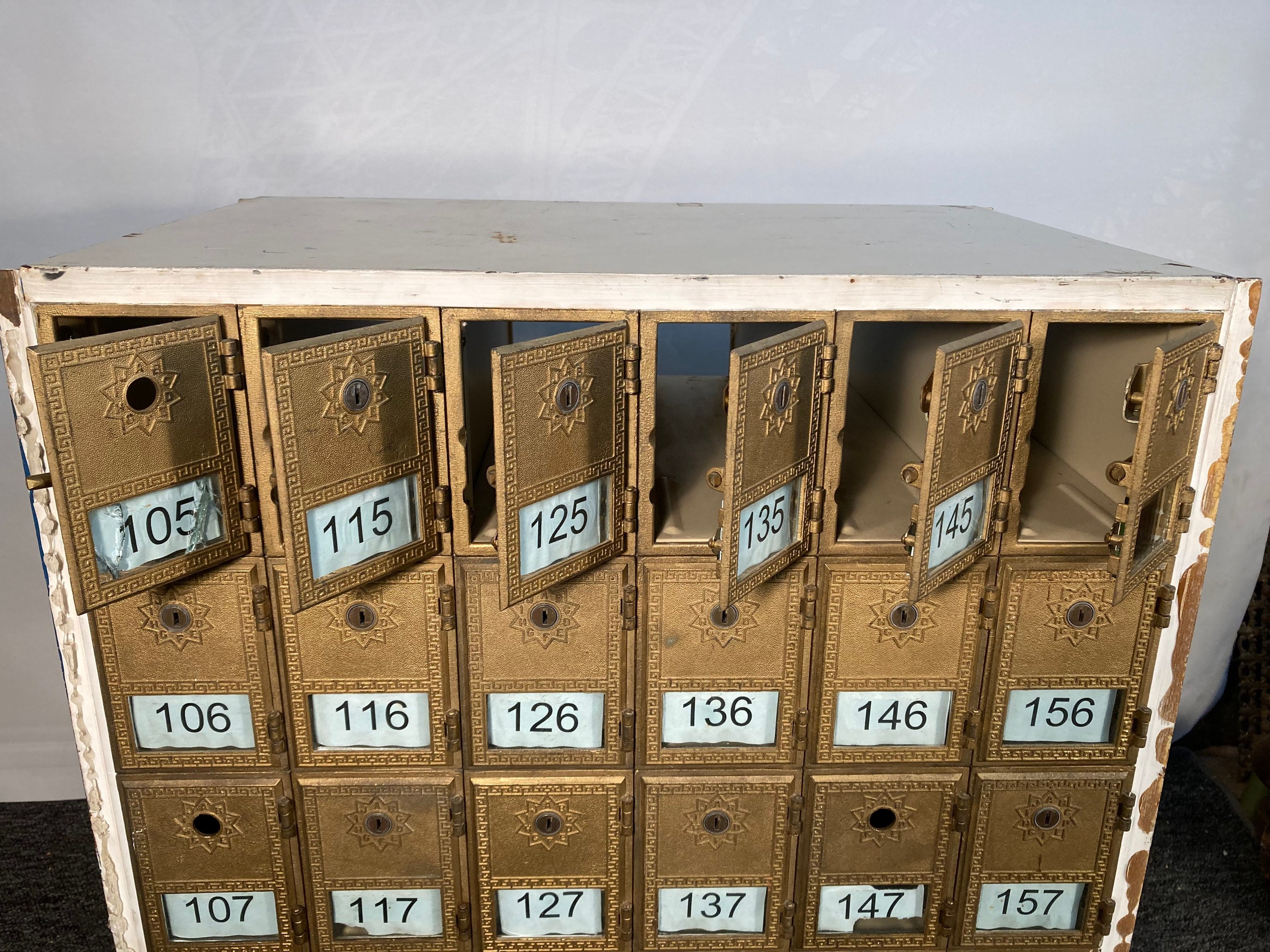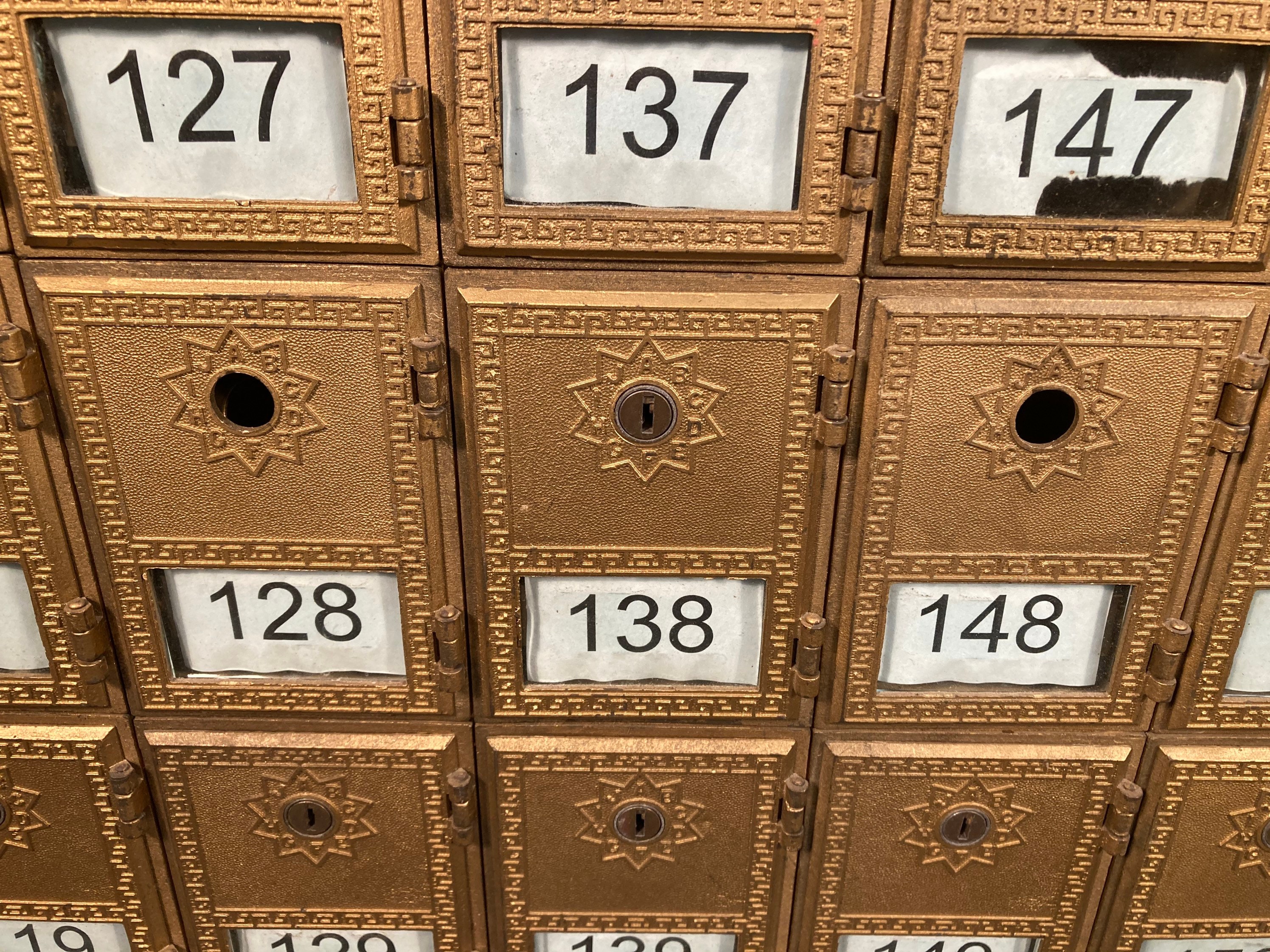Historical Context of Antique Mail Sorters: Antique Mail Sorter Cabinet

The evolution of mail sorting systems reflects the broader technological and societal changes that have shaped communication and commerce throughout history. From rudimentary manual methods to the sophisticated automated systems of today, the journey showcases human ingenuity in tackling the ever-increasing volume of postal traffic. Antique mail sorter cabinets, therefore, represent tangible artifacts of this significant historical progression.
Early mail sorting was a largely manual process. Before the standardization of postal systems, the delivery of mail relied heavily on individual messengers and private couriers. As postal services developed, simple pigeonholes and rudimentary sorting tables became common. These early systems were often made from readily available materials like wood, and relied on simple organizational schemes based on geographic location or recipient names. The Industrial Revolution significantly impacted mail sorting. The introduction of steam-powered printing presses led to a massive increase in mail volume, demanding more efficient sorting methods. This era saw the emergence of more sophisticated cabinets, often incorporating metal components for durability and standardized compartments for improved organization.
Materials and Manufacturing Techniques
The materials and manufacturing techniques used in the construction of mail sorter cabinets varied considerably across different eras and regions. Early cabinets were predominantly constructed from wood, often employing joinery techniques like mortise and tenon for strength and durability. As metalworking techniques improved, iron and later steel became increasingly common, particularly for larger, more robust cabinets designed to handle heavier loads. The use of metal allowed for more precise compartmentalization and enhanced longevity. In the late 19th and early 20th centuries, mass production techniques like stamping and welding were adopted, leading to the production of more standardized and affordable cabinets. Some high-end cabinets incorporated decorative elements, such as brass fittings or inlaid wood veneers, reflecting the aesthetic preferences of the time. The materials used often reflected the prevailing economic conditions and technological advancements of the period.
International Variations in Design and Functionality
Antique mail sorter cabinets exhibit considerable variation across different countries and regions, reflecting diverse postal systems and cultural preferences. For instance, cabinets from the United States often featured a large number of individual compartments, reflecting the vast geographical expanse and high volume of mail processed. European cabinets, in contrast, might exhibit more compact designs with a focus on efficient space utilization, reflecting potentially denser populations and smaller postal networks. The design of the compartments themselves could vary, with some featuring simple rectangular slots and others incorporating more complex configurations designed to accommodate different mail sizes and types. The use of different materials, such as oak in British cabinets and mahogany in some American examples, further contributes to the diversity observed. These differences reflect not only technological capabilities but also the unique logistical challenges and organizational approaches employed by various postal services.
Social and Economic Impact of Mail Sorters
Mail sorter cabinets played a pivotal role in the development of modern communication and commerce. The ability to efficiently sort and distribute mail facilitated the growth of businesses by enabling rapid communication between buyers and sellers, suppliers and manufacturers. The expansion of postal services, made possible by improvements in sorting technology, fostered economic growth and integration. Personally, the speed and reliability of mail delivery strengthened personal connections across geographical distances, allowing families and friends to maintain contact more easily. The increased efficiency in mail handling, facilitated by improved cabinets, directly contributed to the overall economic and social well-being of communities. The speed and reliability of postal services were crucial to the success of many businesses, particularly those involved in trade and commerce. The rise of mail-order businesses, for example, was heavily reliant on the efficient processing and delivery of mail, a process greatly aided by improved sorting techniques and technologies embodied in these cabinets.
Design and Functionality of Antique Mail Sorter Cabinets

Antique mail sorter cabinets represent a fascinating intersection of craftsmanship, practicality, and the evolving postal systems of the past. Their design reflects not only the technological limitations of their era but also the aesthetic sensibilities of the time, offering a glimpse into the history of mail handling and office organization. Understanding their design and functionality allows us to appreciate their ingenuity and the significant role they played in the efficient processing of mail.
Categorization of Antique Mail Sorter Cabinets
Antique mail sorter cabinets varied considerably in size, capacity, and features depending on their intended use and the volume of mail they were designed to handle. Smaller cabinets might have been used in private residences or small businesses, while larger, more complex systems were employed in post offices and larger commercial settings. The following table provides a categorized overview:
| Type | Size (Approximate) | Capacity (Approximate) | Features |
|---|---|---|---|
| Small Desk-Top Sorter | 1-2 feet wide, 1-3 feet tall | 50-200 pieces of mail | Several small drawers or compartments, often labeled alphabetically or numerically. May include a small shelf or flat surface. Typically made of wood. |
| Large Free-Standing Sorter | 3-6 feet wide, 4-7 feet tall | 500-5000+ pieces of mail | Multiple drawers, often arranged in tiers. Larger compartments for bulk mail. Likely to include labels and possibly integrated locking mechanisms. Constructed from wood or metal. |
| Specialized Sorter (e.g., Railway Post Office) | Highly variable, depending on the application | Highly variable | Designed for specific postal needs; features could include compartments for different mail routes, sorting trays for express mail, and integrated locking systems for security. Materials varied greatly based on intended use and durability requirements. |
Detailed Illustration of a Typical Antique Mail Sorter Cabinet
Imagine a free-standing cabinet approximately four feet wide, five feet tall, and two feet deep, constructed primarily from solid oak. The exterior features a rich, dark stain and simple, elegant molding. The cabinet is divided into numerous drawers, typically arranged in three or four horizontal tiers. Each drawer is approximately six inches deep and twelve inches wide, with a small brass label holder on the front. A cross-section would reveal a simple but robust construction: solid oak framing, dovetailed joints, and sturdy drawer slides. The drawers themselves would likely be made from lighter wood, such as pine, and lined with felt or other soft material to protect the mail. The back of the cabinet might be panelled or simply constructed from sturdy boards. The overall impression is one of solidity, durability, and understated elegance.
Comparison of Antique and Modern Mail Sorting Systems
Antique mail sorter cabinets, while effective for their time, relied heavily on manual sorting. This approach, while labor-intensive, allowed for flexibility in handling various mail types and sizes. Modern mail sorting systems, in contrast, utilize automated processes, including optical character recognition (OCR) and sophisticated conveyor belts. This results in significantly higher throughput but reduces flexibility and may be less adaptable to irregularly sized or damaged mail. Antique systems offered the advantage of simplicity and ease of repair, while modern systems offer speed and efficiency at the cost of increased complexity and potential downtime due to mechanical or software failures. The inherent trade-off is between human adaptability and technological speed.
Collecting and Restoring Antique Mail Sorter Cabinets

Acquiring and restoring antique mail sorter cabinets offers a unique blend of historical preservation and aesthetic appreciation. These cabinets, once vital components of postal operations, now represent a fascinating piece of industrial design and technological history, appealing to collectors and enthusiasts alike. Their inherent beauty and functionality make them desirable additions to any collection.
Authenticity Identification
Identifying genuine antique mail sorter cabinets requires a keen eye for detail and a thorough understanding of their construction and evolution. Several key features distinguish authentic pieces from reproductions. Careful examination is crucial.
Antique mail sorter cabinet – Reproductions often lack the subtle imperfections and wear indicative of age and use. Look for signs of age, such as faded paint, minor dents, and scratches consistent with decades of use. Authentic cabinets typically exhibit variations in paint color and texture, reflecting the methods and materials of the time. Examine the metalwork carefully; authentic pieces often show evidence of hand-crafting, which contrasts with the uniformity of mass-produced reproductions. Hardware, such as drawer pulls and latches, should be consistent with the era and style of the cabinet. Researching the manufacturing history of various companies that produced these cabinets can help verify authenticity. The presence of maker’s marks or identifying labels can be invaluable in authentication.
Restoration and Maintenance
Restoring an antique mail sorter cabinet involves a meticulous process requiring patience and expertise. The goal is to preserve its historical integrity while improving its aesthetic appeal and structural soundness.
The restoration process should begin with a thorough cleaning. Gentle cleaning methods are crucial to avoid damage. Dust and loose debris can be removed with a soft brush or compressed air. For more stubborn dirt, a damp cloth with a mild detergent solution may be used, followed by thorough drying. Any significant rust or corrosion should be addressed with appropriate rust removal products, followed by protective coating. Wood components may require treatment to prevent further decay. Damaged or missing parts may necessitate repair or replacement with historically accurate materials. The cabinet’s finish should be carefully assessed and restored if necessary. Proper preservation techniques are crucial to protect the cabinet from future damage. This includes controlling environmental factors such as humidity and temperature, and keeping it away from direct sunlight. Regular inspection and maintenance are key to long-term preservation.
Collector Value and Appreciation, Antique mail sorter cabinet
Antique mail sorter cabinets hold significant value among collectors, driven by their historical significance, aesthetic appeal, and relative rarity. Their value is influenced by factors such as age, condition, maker, and rarity of design.
While precise pricing varies widely depending on these factors, examples of notable sales and museum collections illustrate the high value placed on these pieces. For instance, a particularly rare and well-preserved example from a prominent manufacturer might fetch thousands of dollars at auction. Several museums dedicated to postal history or industrial design include these cabinets in their collections, underscoring their historical and cultural importance. These collections serve as a testament to the enduring appeal of these functional works of art and their importance in preserving a tangible link to the past.
